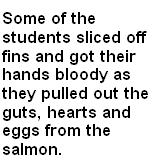By Tamara Baluja
Haida Gwaii, B.C.


When I started planning my itinerary to B.C., I assumed the most expensive item would be my flight from Toronto to Vancouver.
I was shocked to discover that my round trip flight from Vancouver to Haida Gwaii cost only $50 less than my flight three quarters of the way across Canada. Although only a short two-hour flight away from Vancouver, these B.C. remote islands close to the Alaskan border were harder to get to than simply flying across the country. In delivering quality education in First Nations communities, it was clear that cost and accessibility were major obstacles.In spite of those challenges, both the band school and public schools try hard to make schooling culturally relevant for their students. My goal was to dig deeper.
When I initially started reporting on First Nations education, it felt very strange to be writing about reserve schools I had never visited. Distance, time, and cost are all factors that newsrooms across the country are grappling with when it comes to reporting on aboriginal education.








